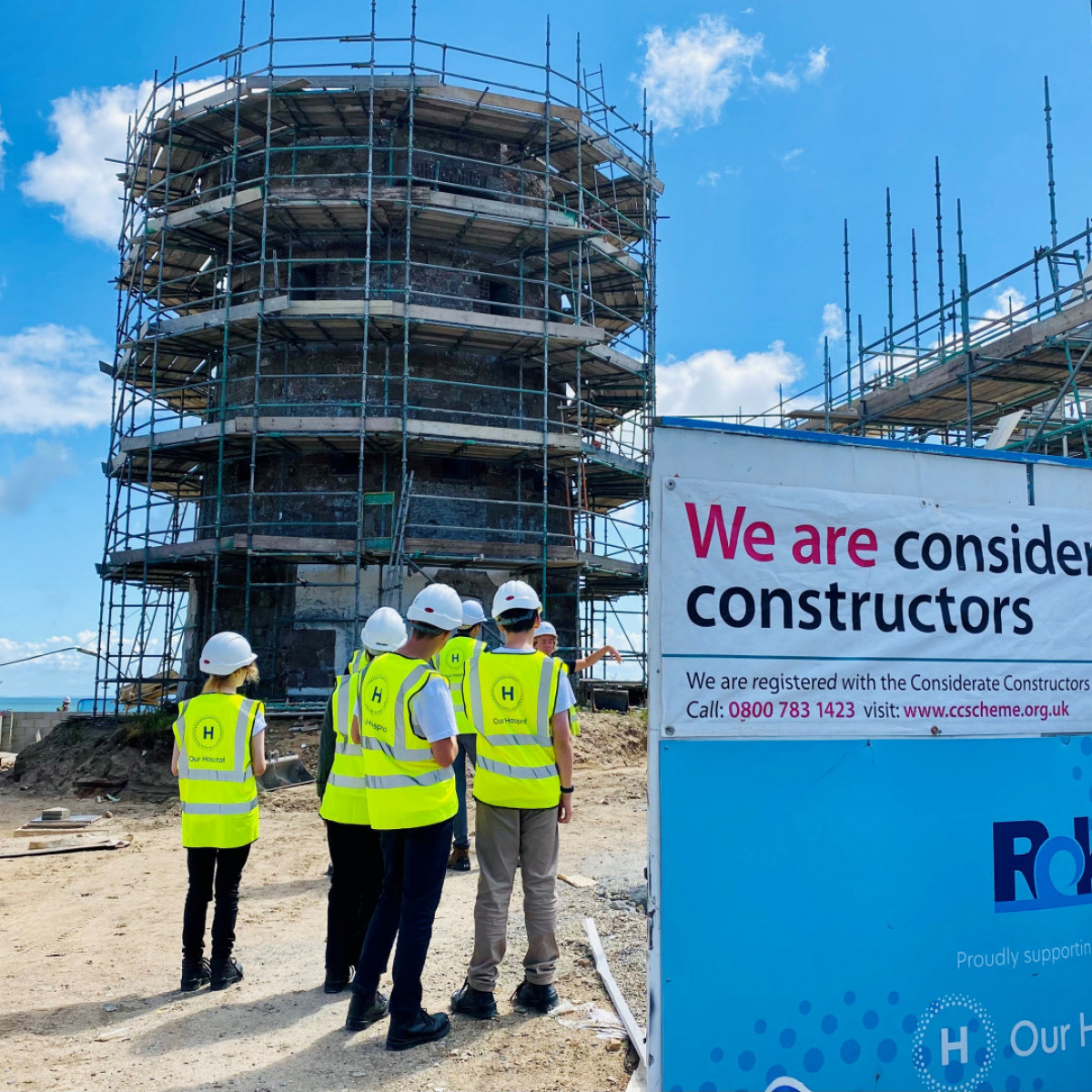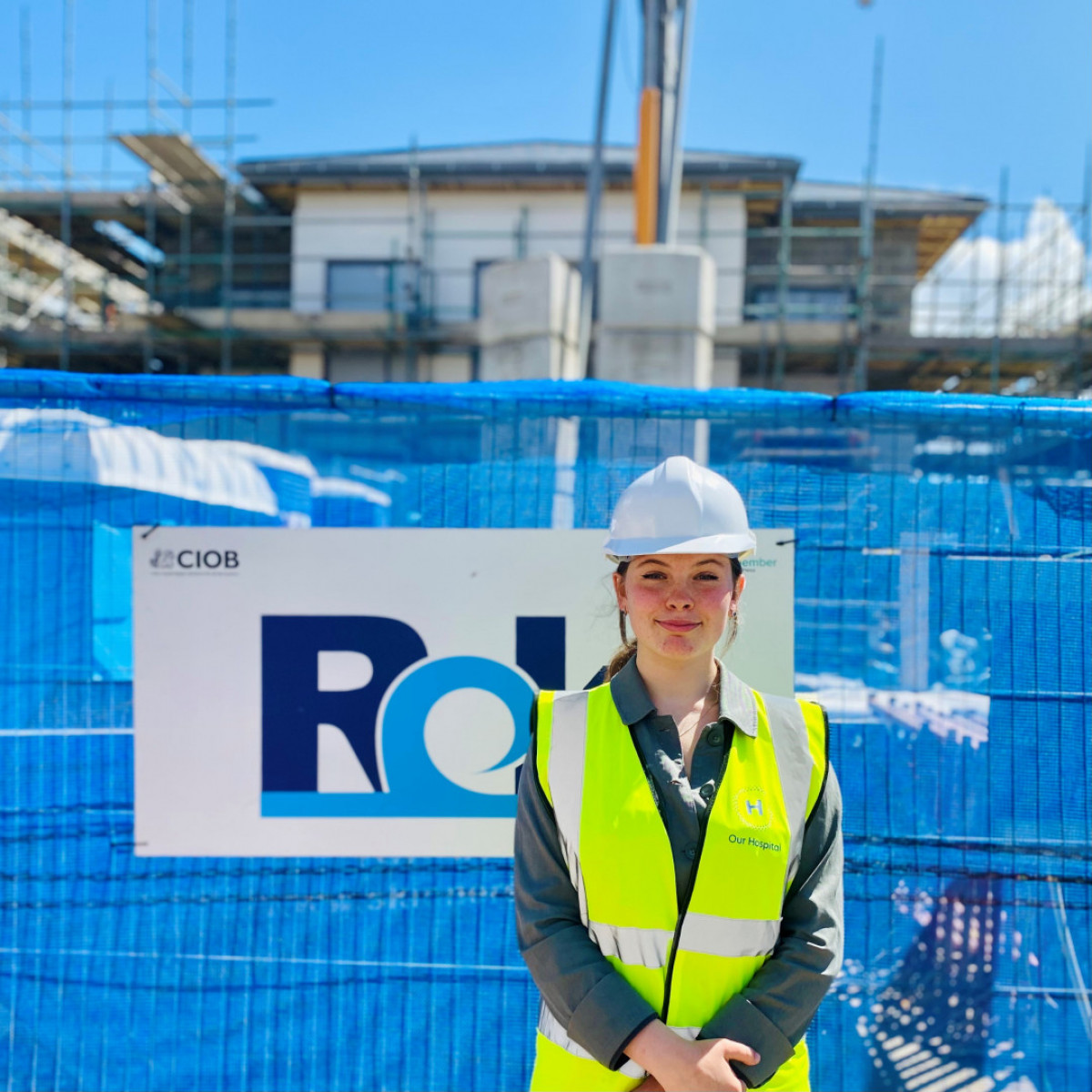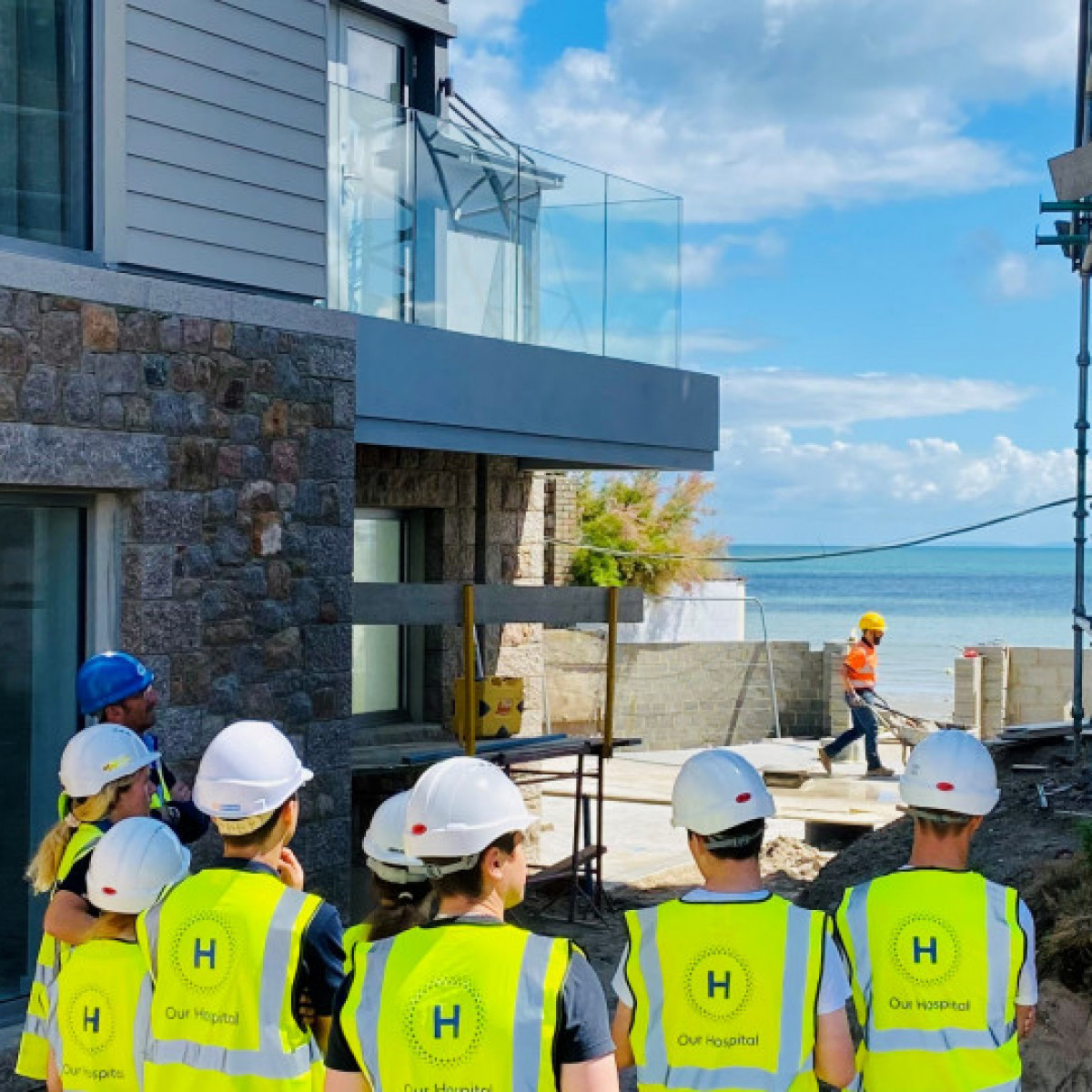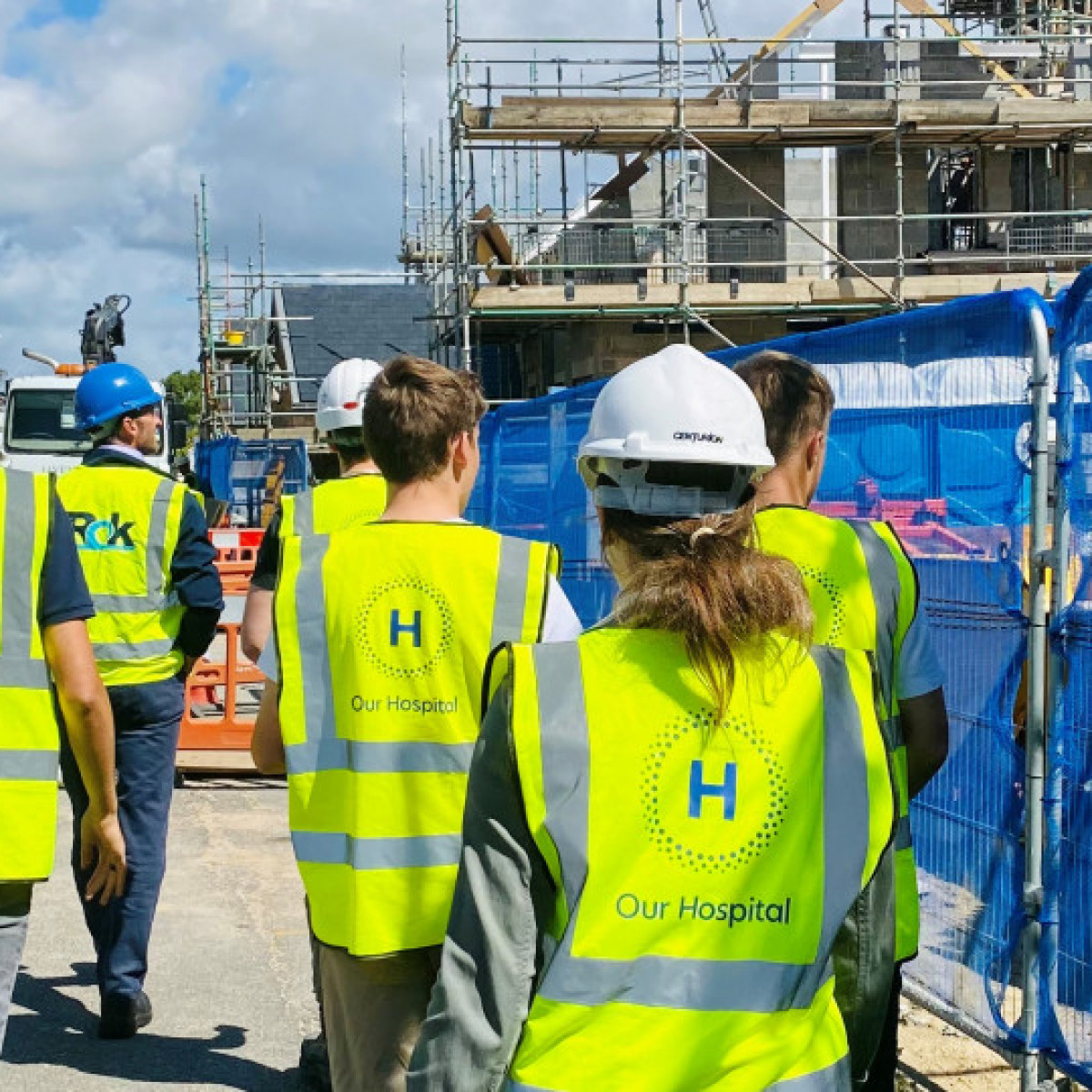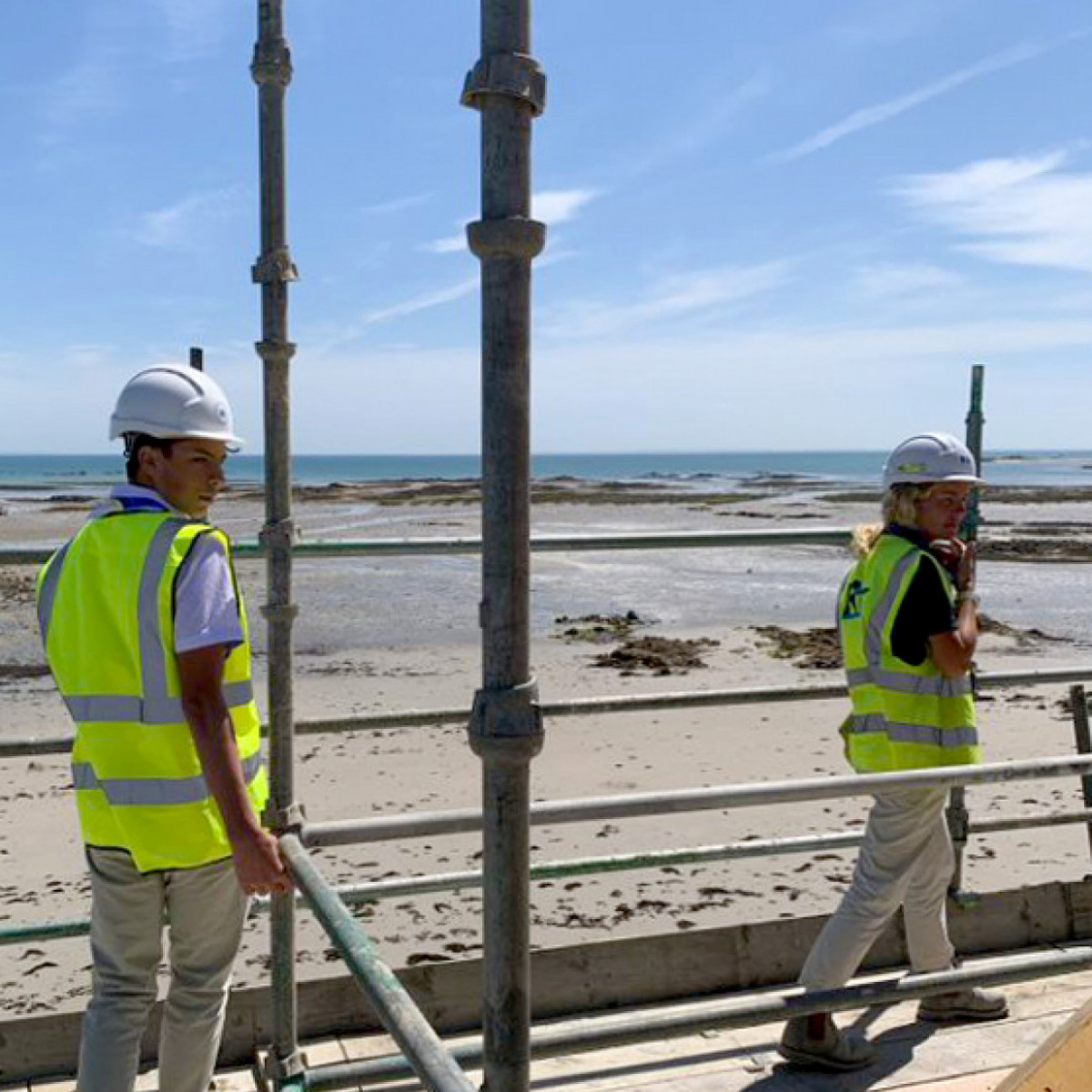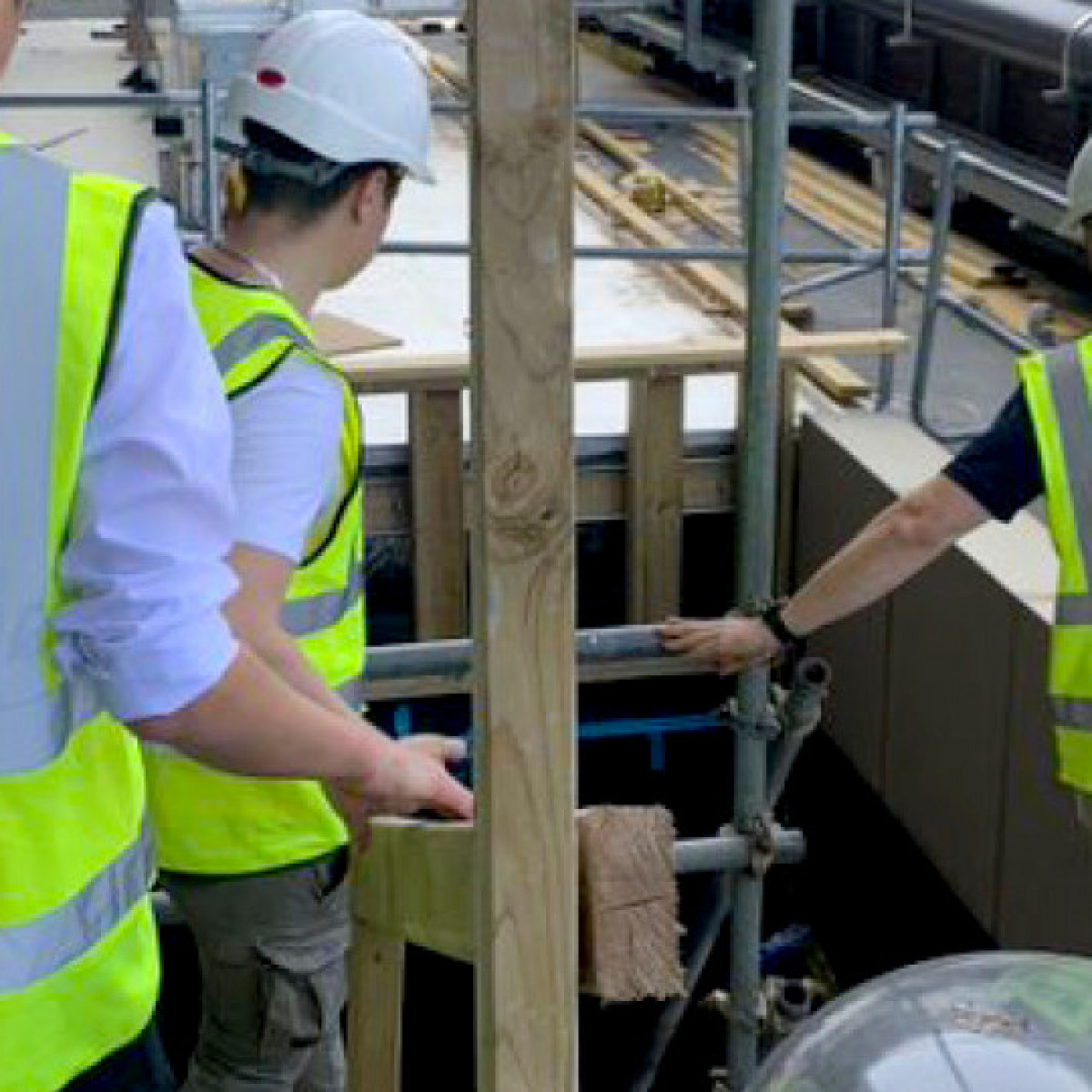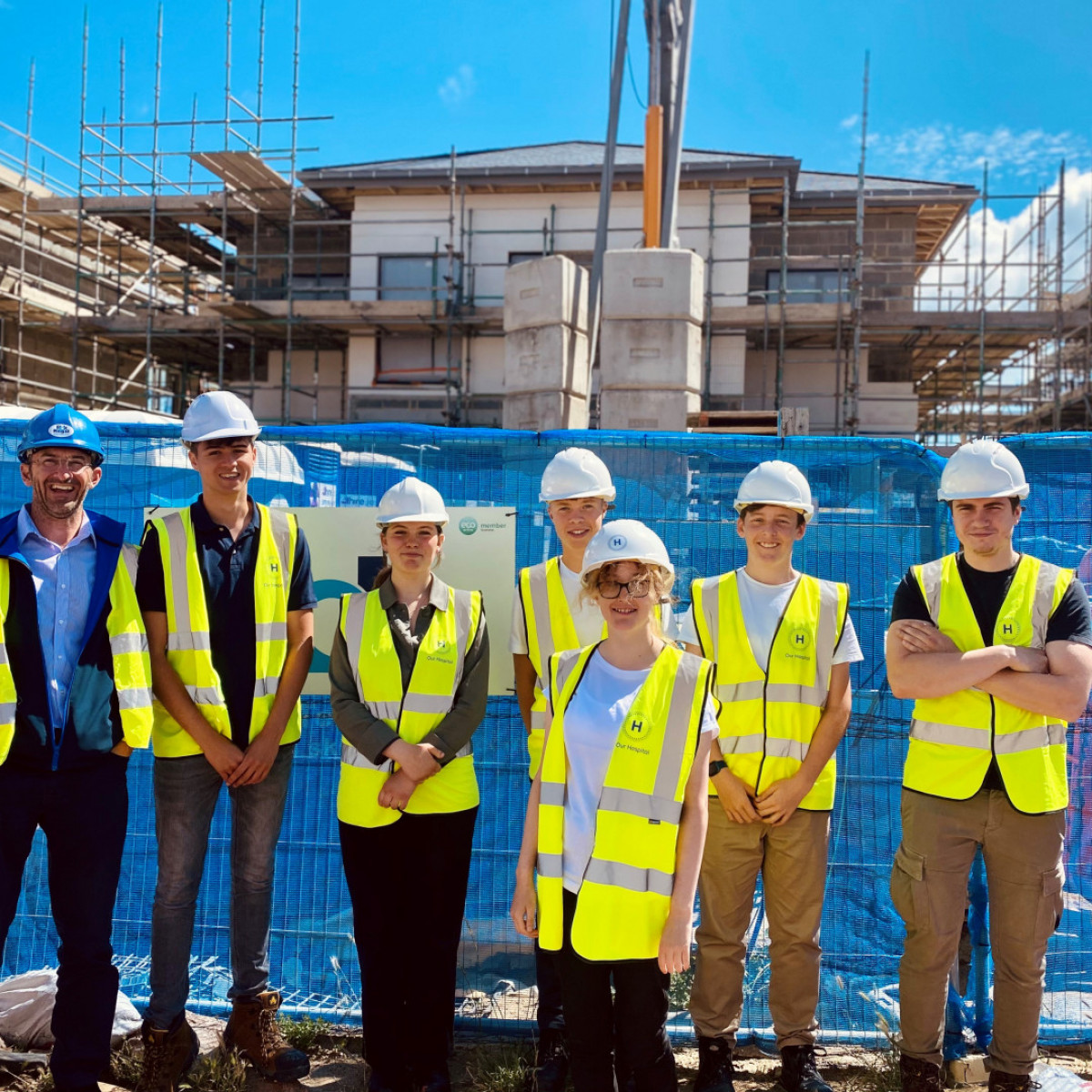Five more Trident students
In June, Liedson joined RokFCC JV on Our Hospital Project (OHP) team to better understand the different roles on a project of this scale and how a building site works - especially which equipment and materials are needed in which order. He visited two Rok sites including the luxury, seaside apartments at St Clement and Jersey General Hospital. In the office, he particularly enjoyed learning from our mechanical, electrical and plumbing engineer, Patrick, about the water systems on which he was working. Liedson felt that he benefited from improving his communication via email and learning how to prioritise tasks.
The team were delighted to receive a letter of thanks from Liedson after this work placement.
In late June/early July, Marta, Archie, Bronwen and Kyle joined the OHP team for two weeks, which included time in the project office as well as time on building sites, including The Waves in St Clement; the International Finance Centre's Building 6 in St Helier; residences and a retirement home in St Lawrence, 'Les Bardeaux'; social housing apartments, 'Le Marais'; Overdale Hospital; and Jersey General Hospital's maternity ward.
The students completed a work experience diary to help them consider and reflect on their learning journey. Together, their entries shows a wide range of learning, including construction technicalities, software, planning, commercial factors and career options and paths.
Day 2 highlights according to Kyle: "Today, I learnt a new program which I hadn't seen before. Sergio taught us how to use an app called Autodesk Navisworks, which allowed us to see a 3D model of an earlier stage design of the hospital project. Through the app we could see the structural features of each floor and the measurements for each wall. It allowed us to get a 3D image of the main hospital and the four other buildings. We could also see the different safety features relating to different potential hazardous scenarios, e.g. fire safety. We also had a quick look at Revit, which is another app where the designs can be structured online - making it a lot easier than having to do draw it out on paper and allows many people to work on the same design remotely. An understanding of Building Information Management software could be helpful if I take up a career in construction, as it may play a role in the work I do."
Day 4 highlights according to Archie: "Being able to go onto the International Finance Centre site was good, as we got to see what they are working on behind those walls and when they expect to finish Building 6. As we arrived on site, we spoke to Mark, who oversaw the project. He showed us around the site and how they are at the stage of layering concrete for the foundation of the building. He also showed us the beams that would be used for the base/structure of the building. I learnt that copper bands are strung down the pillars inside a building; in case of a lightning strike, it would allow the electricity to travel though these cables, straight to the ground, and prevent damage or injury."
Day 6 highlights according to Bronwen: "Adrian came to talk to us about commercial roles and cost plans. Adrian spoke about his career path and what lead him to be a commercial manager on Our Hospital Project, as well as other projects he had worked on around the world such as the New West Breakwater/ New Port of Veracruz in Mexico, which was 4.2 km long; Dublin Airport; and many others. We learned about the different careers in civil engineering and how people from around the world have joined together to construct the new hospital here in Jersey."
Day 9 highlights according to Marta: "On Day 9, we spoke to civil engineer, Pedro, about his learning path/career path and the projects he has been involved in, including a metro and a railway project in Romania, a wastewater treatment plant in Egypt and a college campus in Ireland. He spoke about the organizational chart on a construction site and in a construction project team. Pedro said that he became a civil engineer as he was always passionate and curious about the works on a construction site via documentaries - he continues to be fascinated by the Millan Viaduct and the Three Gorges Dam.
Afterwards, we completed the Jersey Safety Awareness Test (JSAT), which is a compliance requirement for employers under the Health and Safety at Work (Jersey) Law 1989 and the Health and Safety (Management in Construction) (Jersey) Regulations 2016. The percentage to pass was 90% as it was advanced, and I got 95%. A future short-term action from this day could be to show my teacher at school, my JSAT certificate."
The OHP team gratefully received a thank you card from the group: "Thank you for having us. We have all had a great time working with you. Good luck on the project... We hope to use the hospital when we are older, and will remember it as the build to which you all contributed."
